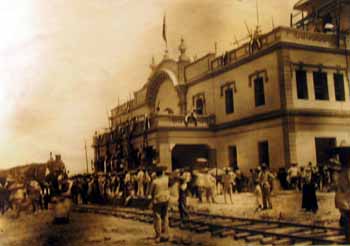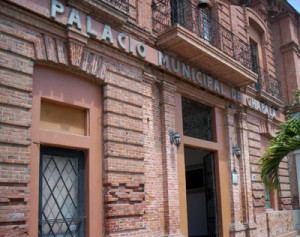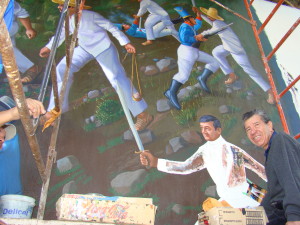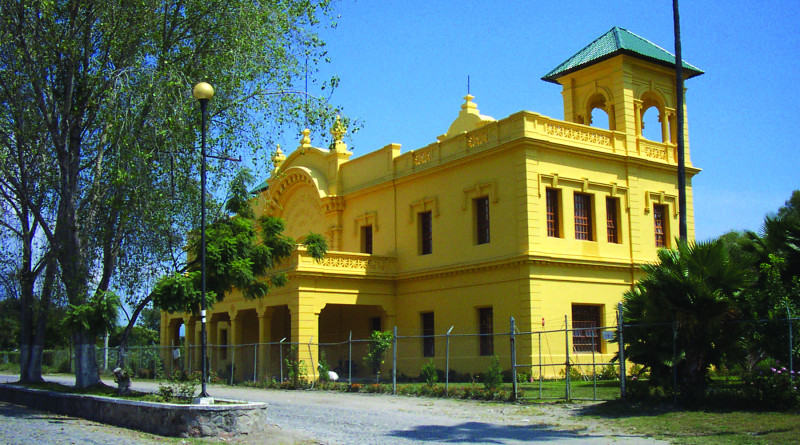Points of Historical Interest
Lake Chapala, whose shores have been populated by indigenous people since the early 12th century, and by Europeans since the early 16th century, has a fascinating history.
It wasn’t until 1895 that it became known as a resort area for people from all over the world, as well as for the Mexicans. Along with what is now known as Cuernavaca, however, it was a resort area for the Nahuatl-speaking nobles of Tenochtitlan (the “Aztec” Empire) even long before the Spanish arrived.
Lake Chapala became especially famous during the 1930s when an “artistic colony” began to spring up in the area. Creative people came from Europe, the U.S. and Canada, and other countries for the beauty, the climate, and the ambiance. One of the most famous of these was the author D.H. Lawrence, who wrote his book “The Plumed Serpent” in and about the Lake Chapala area.

The Railroad Station, built around 1913, had a tremendous impact on tourism. The trains allowed one to travel in relative comfort from Guadalajara to the Lakeside area in three hours. The extremely uncomfortable, bone-jarring stagecoaches took up to 12 hours. In addition, the train provided fairly rapid transportation to Mexico City, from whence one could travel to any part of the world.
The old Railway Station has been lovingly restored for viewing, and now serves as a venue for cultural exhibitions and events. It is only one of many interesting structures built during Lake Chapala’s “Grand Époque” or heyday of tourism. There is also the first hotel, “Arzapalo” (now El Mirador del Restaurante Beer Garden), the Braniff Mansion (of the Braniff Airlines family and now the Restaurante Cazadores), the mansion of the architect Luís Barragán (on the south side of the Supermercado on Avenida Madero), the
 Hotel Palmera (later the Hotel Nido and now the Presidencia), and the Hotel Niza (now Banco BITAL), also located on Avenida Madero.
Hotel Palmera (later the Hotel Nido and now the Presidencia), and the Hotel Niza (now Banco BITAL), also located on Avenida Madero.
Numerous other buildings were constructed, some of which remain while others, such as the Telegraph and Post Office building have fallen into ruin or been demolished. The original Palacio Municipal, on the corner of Calles Madero and Hidalgo (northwest corner by the fountain) is undergoing remodeling andnow serves as a cultural center.
On Calle Hidalgo, over a dozen Villas built between 1878 and 1920 may be found.
A large number of churches in Baroque and Renaissance style were built in the late 16th century, and several convents of adobe and wattle, as well. The only remains to be seen of these is the steeple tower of the original San Antonio Tlayacapan church.

Of the municipalities which comprise the Lake area: Chapala, Tlajomulco, Ixtlahuacan de los Membrillos, Poncitlán, Jocotepec, Tuxcueca, and Tizapán el Alto, Chapala is considered the head. All of the towns on the northern shore, from Mexcala to Jocotepec and beyond, have churches and other buildings with fascinating and picturesque architecture. Murals can be seen throughout the area, including a large one depicting the area’s history on Hidalgo West in Chapala.
Ixtlahuacan de los Membrillos, although not directly on the shoreline, has one of the most unusual and remarkable churches. The walls are covered with extraordinarily beautiful murals painted in 1961 by Ajijic artist Javier Zaragoza when he was just 16 years old. His murals must be seen to be believed and especially to be appreciated.


